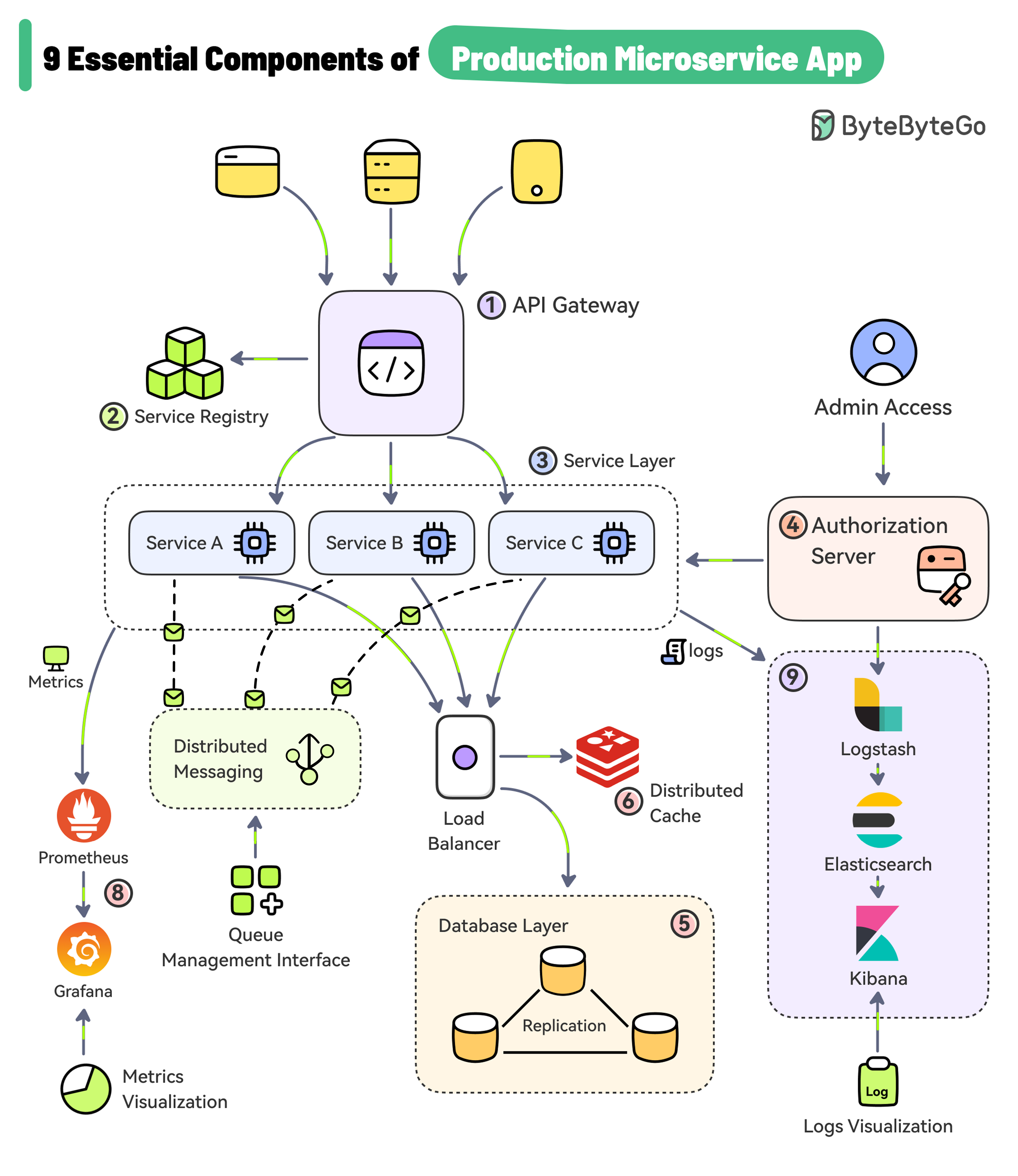Explore 9 key components for building robust microservice applications.

The gateway provides a unified entry point for client applications. It handles routing, filtering, and load balancing.
The service registry contains the details of all the services. The gateway discovers the service using the registry. For example, Consul, Eureka, Zookeeper, etc.
Each microservice serves a specific business function and can run on multiple instances. These services can be built using frameworks like Spring Boot, NestJS, etc.
Used to secure the microservices and manage identity and access control. Tools like Keycloak, Azure AD, and Okta can help over here.
Databases like PostgreSQL and MySQL can store application data generated by the services.
Caching is a great approach for boosting the application performance. Options include caching solutions like Redis, Couchbase, Memcached, etc.
Use platforms such as Kafka and RabbitMQ to support async communication between microservices.
Microservices can be configured to publish metrics to Prometheus and tools like Grafana can help visualize the metrics.
Logs generated by the services are aggregated using Logstash, stored in Elasticsearch, and visualized with Kibana.